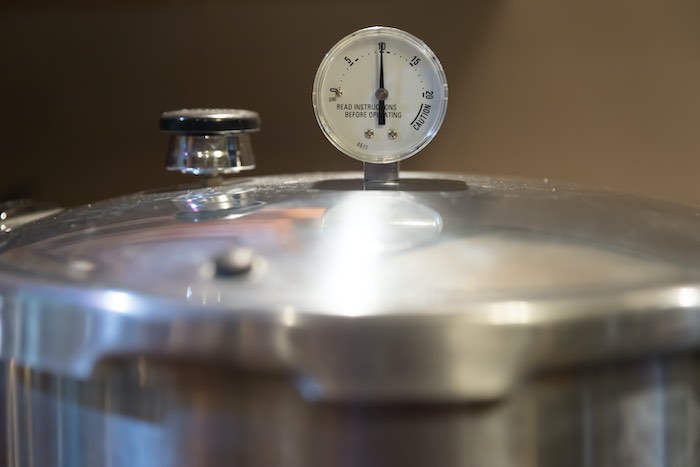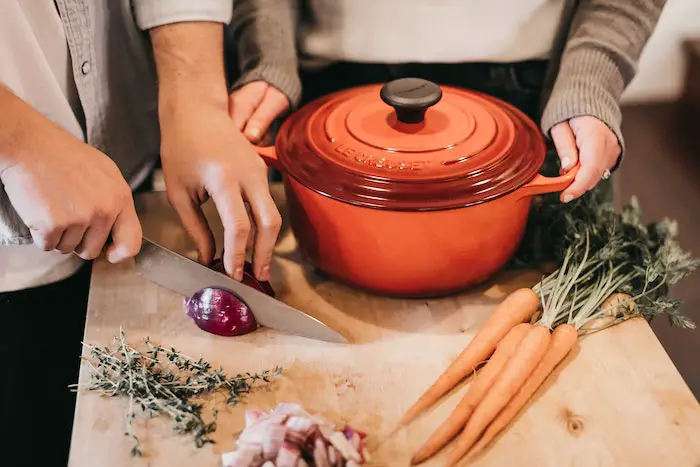6 Ways to Remove Grease from Spaghetti Sauce
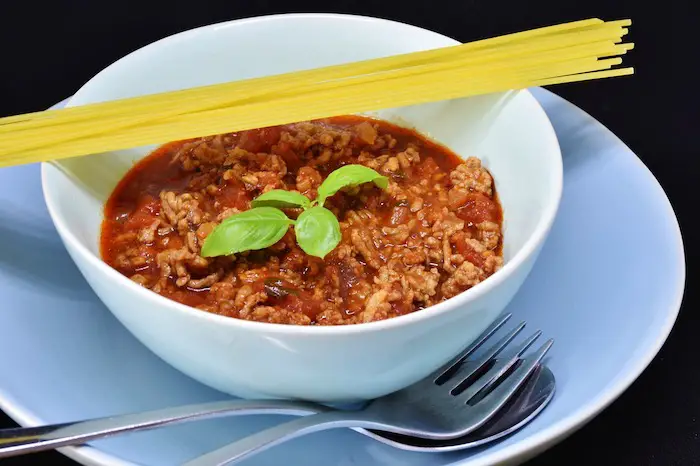
You’re going to make a pot of spaghetti sauce for dinner tonight, but you always end up with that thick layer of grease that you really want to avoid. You’ve made sauce many times before, but you can’t seem to prevent having this massive amount of grease in your final product. How do you remove the grease from spaghetti sauce?
Basically, there are six ways to remove grease from spaghetti sauce. First, you can strain off the grease once the meat has finished cooking but before you add the sauce and other ingredients. Additionally, you can also cook your pasta in the greasy sauce; add a little cornstarch to the mix; or use some coffee filters, bread slices, or a skimmer after the batch of spaghetti sauce has been completely cooked.
While the methods mentioned here are very effective, it’s imperative that you understand that you won’t get rid of all of the grease entirely when making spaghetti sauce if you’re also using a sauce mix or making your own that contains olive oil as an ingredient. Although it isn’t quite the same as the fat from meat, olive oil will still contribute to giving your sauce a greasy appearance. However, use of the following methods can still help you reduce the overall oiliness of your spaghetti sauce a bit.
1. Strain Off the Grease After Cooking the Meat
Any good spaghetti sauce starts with sautéing some onions and garlic in olive oil. Once this base is ready, you brown the meat. This is where most of the grease comes from in spaghetti sauce recipes, and this part of the preparation process is where you can remove the most grease as well.
The best way to remove grease from spaghetti sauce is managing the way you cook and prepare the meat ahead of time. There are several ways you can do this depending on the type of protein you’re using.
Chicken & Poultry
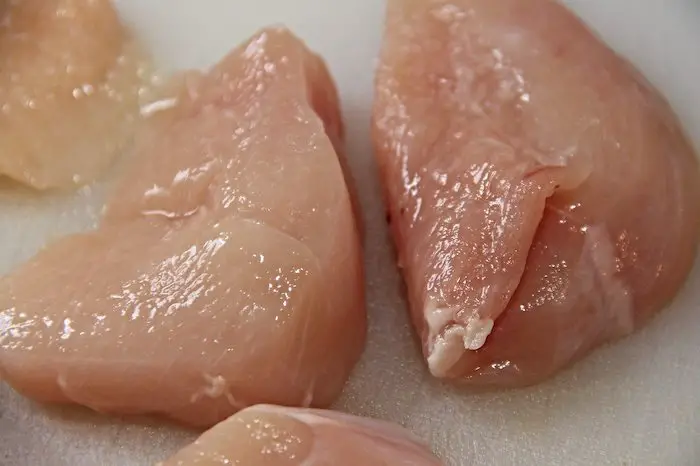
Chicken (and other types of poultry) shouldn’t leave behind too much grease. What will make often contribute to the grease level in a sauce using chicken or other birds is how much olive oil you use to brown the meat before adding the rest of the sauce. To keep the level of oiliness down, ensure you only use one tablespoon of oil per six ounces of chicken.
Beef & Pork
Beef and pork, notorious for contributing to heavy quantities of fats in any sauce, will be the largest culprits of greasy spaghetti sauce. When you’re done browning either of these meats, you can simply drain off the fat and grease left in the pan. Cover the pan with a lid and pour out the hot grease into an old, used glass container or even into a “bowl” made from aluminum foil to catch the grease and allow for safe disposal.
More Thorough Straining
If you are adamant about removing the grease, regardless of the type of protein, you can place a colander or strainer with some muslin or cheesecloth inside over a large bowl lined with aluminum foil. Spoon or pour the meat into the cloth-covered strainer, and then collect the fat in your lined bowl, allowing it to cool and harden for easy disposal. (You may also place the bowl of drained fat in the fridge or freezer to speed up the hardening process.)
Note of caution: DO NOT POUR HOT GREASE DOWN THE DRAIN! This will clog your pipes once the grease cools. It’s not fun nor cheap to fix this problem.
2. Cook Your Pasta in the Greasy Spaghetti Sauce
If you’re making something like manicotti or lasagna with your sauce, you can use the greasiness of the sauce to your advantage. Instead of parboiling your pasta beforehand, set up your pan and fillings according to the recipe, but use uncooked pasta.
If you use this method, reduce the oven temperature and lengthen the cooking time of the dish. The grease will do wonders to soften the pasta while everything cooks. This will reduce the final amount of grease in your food without you having to do much else in the way of preparation.
3. Add Some Cornstarch to Reduce the Greasiness
In the event that you’re not interested in making baked pasta, you can also add one teaspoon to one tablespoon of cornstarch to the sauce. This will absorb the grease and make the sauce a little thicker. However, if you use too much it can result in an undesirable texture.
Therefore, add cornstarch by just one teaspoon at a time until the grease is at a level you’re happy with. Keep in mind that three teaspoons equal one tablespoon, though. Also, try to avoid adding more than two tablespoons for the average jar’s worth of spaghetti sauce.
4. Use Coffee Filters to Absorb the Grease
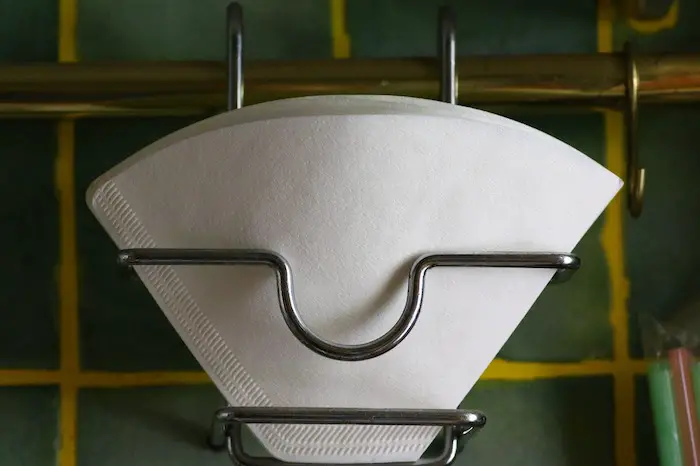
As a last-ditch effort, you can always run some coffee filters through the sauce as well. This method is ideal for when the sauce has finished cooking but you notice a good layer of grease floating at the top. How you approach this technique will depend on the amount of grease there is and the size of your batch of spaghetti sauce.
Don’t strain the grease out with the filter, but instead, run the filter through the sauce and allow it to soak up the grease. If you’re just warming up a small jar of sauce and there’s a slight bit too much grease, drag one or two filters through, and your problem should be solved.
When you have a large pot of sauce heavy-laden with grease, you’ll want to stick several coffee filters into it to get the job done. Wait a few moments, and pull them out. Repeat the process until the grease dissipates to a level that’s to your liking.
5. Use White Bread to Absorb the Grease
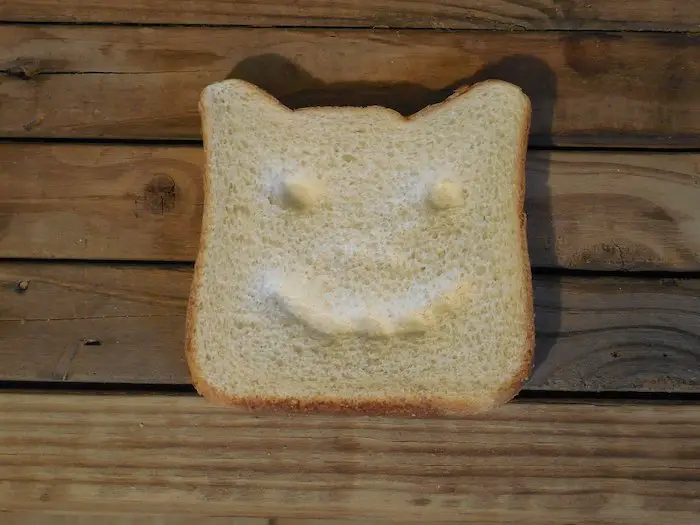
One of the simplest ways to sob up extra grease in your spaghetti sauce is to place slices of white bread on top of the fat and oil that have floated to the surface. Don’t let the bread slices linger too long due to the fact that they will eventually soak up too much sauce in general and start to fall apart, but keep an eye on them and watch the fatty grease disappear before your eyes. This is also a great method for if you have some stale bread that’s going bad and need to find a good purpose for using it.
6. Skim the Fat and Grease with a Ladle or Fat Skimmer

Once your sauce has been cooked and the grease floats to the top, you can also use a fat skimmer (specially designed for this purpose) or a simple ladle to skim off the pockets of grease sitting at the top of your spaghetti sauce. This is a very simple method and quite effective.
If you aren’t planning on eating your spaghetti sauce right away, you can also place the pot of sauce in the refrigerator or freezer to encourage more solidification of the grease at the top of the sauce, and this will make removal significantly easier.
Avoid Using Paper Towels
When trying to remove excess grease and oil from your sauce, don’t use paper towels for this. While it may seem like a good idea, keep in mind that you will also leave paper particles behind in the sauce. In excess, this can create health issues such as digestive blockages and stomach pain. However, in most cases, it will simply make the sauce a bit distasteful due to pieces of paper now being included in the meal.
This is why coffee filters, on the other hand, are ideal. Their design specifically accommodates that food or drink will be consumed even after they’ve come into contact with either, so they’re built to strain while also avoiding breakdown. There won’t be little microscopic pieces of paper that you’ll have to worry about when using a coffee filter for such purposes.
FAQ
Can you strain the entire batch of sauce through a strainer with cheesecloth or muslin?
You could try and strain the whole batch of sauce with muslin or cheesecloth, but this isn’t advisable. You will separate all of the meat, herbs, spices, and other good stuff out of the sauce as well.
Can you use flour instead of cornstarch?
You can use flour instead of cornstarch. However, you’ll have to be even more careful about how much you add. Flour will absorb flavor along with the grease, whereas cornstarch will retain and distribute flavor but simply solidify the sauce a bit more.
See Also:
8 Best Cookwares For Indian Cooking In USA
How To Make Hot Pockets Taste Better
How To Toss Wings In Sauce?
Cheese Curds Vs. Mozzarella Sticks: Here Are The Difference
Oligo Syrup Vs. Corn Syrup: How They Compare
